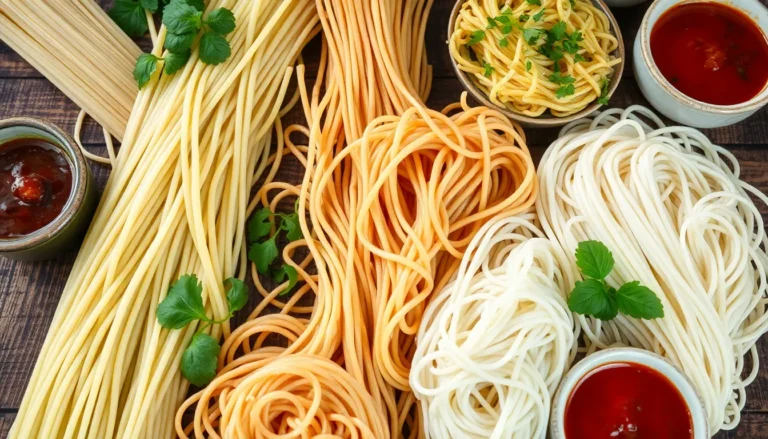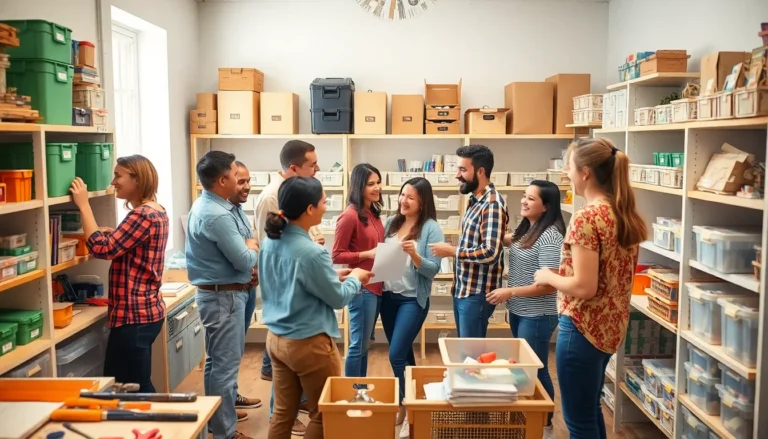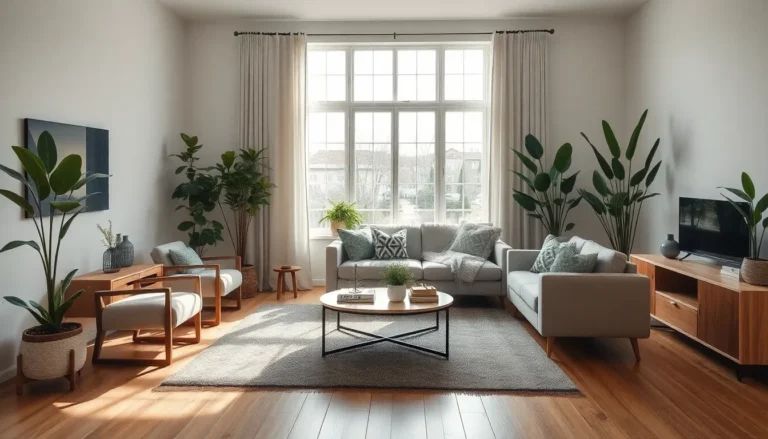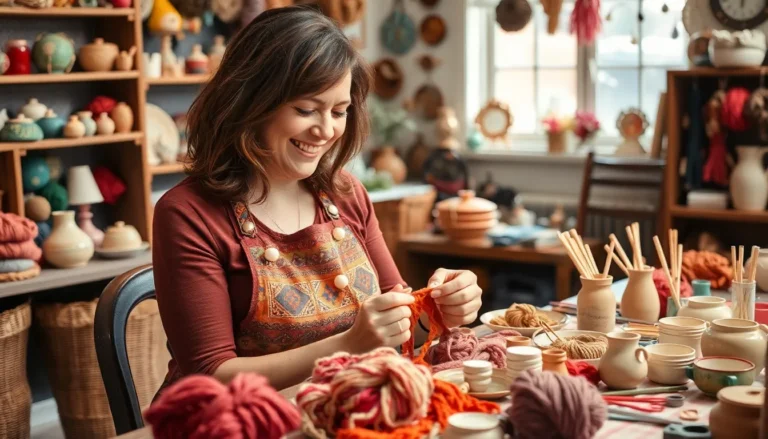Table of Contents
ToggleIn a world dominated by screens and digital distractions, modern crafts are making a vibrant comeback. Imagine turning your living room into a creative haven where glue guns and paintbrushes reign supreme. Whether it’s macramé plant hangers or DIY terrariums, there’s something undeniably satisfying about creating something with your own two hands.
Overview of Modern Crafts
Modern crafts encompass a variety of hands-on activities that enable self-expression and creativity. Artisans frequently explore techniques like macramé, embroidery, pottery, and woodworking. These crafts often blend traditional methods with contemporary aesthetics, appealing to a wide range of enthusiasts.
Craft communities thrive both online and offline, fostering collaboration and sharing. Makers often utilize social media platforms to showcase their projects and connect with others who share their interests. This interaction sparks an influx of new ideas, which encourages experimentation and skill development.
Sustainability plays a significant role in modern crafting. Many artisans opt for eco-friendly materials and practices, tapping into the growing concern for the environment. Upcycling is particularly popular, allowing creators to transform discarded items into functional art pieces.
Workshops and classes also contribute to the popularity of modern crafts. Local studios frequently offer opportunities for individuals to learn new skills and techniques. Participants gain hands-on experience while building a sense of community.
Incorporating personal touches into home decor is common among crafters. Items like handmade candles, hand-painted pottery, and custom wall art enhance living spaces, reflecting individual styles and values. The market for unique, handcrafted goods continues to expand as consumers seek alternatives to mass-produced items.
These aspects illustrate how modern crafts rejuvenate creativity and foster connections between people in the digital age. Engaging in these activities leads to tangible results, resulting in a sense of accomplishment and joy among makers.
Historical Context of Modern Crafts
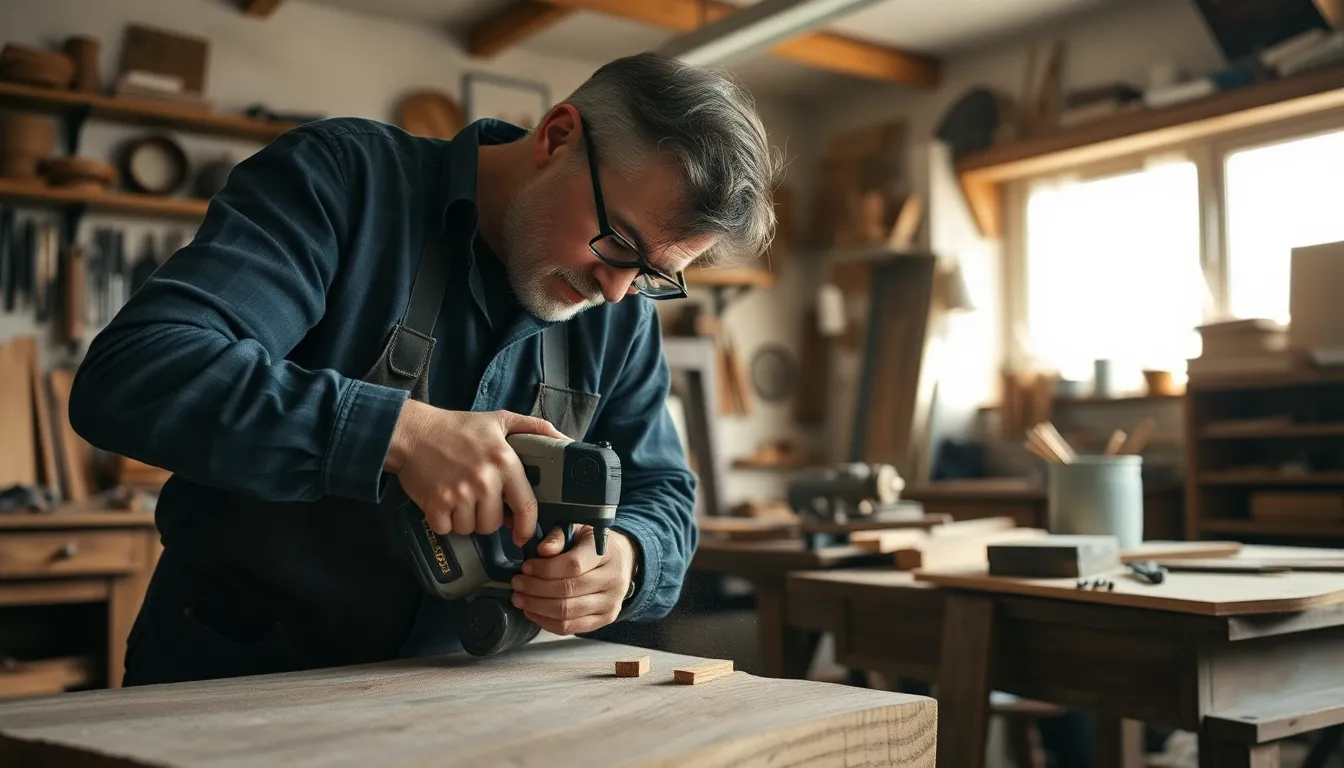
Modern crafts emerged from a rich history of creativity and artisan practices. These crafts trace their roots through various influential stages, shaping how people engage with materials and aesthetics today.
Evolution of Crafting Techniques
Crafting techniques evolved significantly over centuries, transitioning from purely functional to artistically expressive. Traditional skills like weaving, pottery, and woodworking laid the groundwork for contemporary practices. Artisans embraced innovation, integrating new materials and technologies. Hand tools gave way to power tools, expanding the possibilities for makers. Digital tools revolutionized expression, introducing techniques such as laser cutting and digital embroidery. This evolution influenced modern crafts, incorporating both heritage and contemporary methods that appeal to diverse audiences.
Influential Movements in Craft
Several influential movements shaped the landscape of modern crafts. The Arts and Crafts Movement of the late 19th century celebrated handmade artistry, opposing industrial mass production. Mid-20th century movements like Studio Craft promoted the aesthetics of individual creation, emphasizing the importance of personal vision. Additionally, the DIY ethic of the 1970s and 1980s inspired a resurgence in crafting. Contemporary movements embrace sustainability and eco-friendly practices, driving artisans to reconsider material sourcing. Each movement contributed uniquely to modern crafts, enhancing both the techniques and community connections among crafters.
Popular Types of Modern Crafts
Modern crafts encompass an array of creative expressions that resonate with various interests. Each craft type reflects unique techniques and aesthetic choices.
Textile Arts
Textile arts incorporate methods like weaving, embroidery, and fabric dyeing. Makers often utilize sustainable materials, enhancing the eco-friendly aspect of their creations. Apparel, accessories, and home textiles frequently showcase personal style and craftsmanship. Quilting remains popular, often serving as a collaborative activity within communities. Techniques such as screen printing bring contemporary visuals into fabric art, pushing traditional boundaries. The accessibility of online tutorials contributes to a growing interest in textile crafts among enthusiasts.
Woodworking and Furniture Design
Woodworking captures the essence of craftsmanship through furniture design, carving, and woodworking projects. Techniques include joinery, turning, and laminating, allowing artisans to create functional pieces that display skill and artistry. Sustainability is prioritized as many crafters source reclaimed wood and eco-friendly finishes. Custom designs foster uniqueness, appealing to consumers seeking individuality in their interiors. Workshops and local markets provide platforms for artisans to share their creations. Design-focused communities encourage innovation, making woodworking an ever-evolving craft.
Pottery and Ceramics
Pottery and ceramics represent a tactile craft form blending artistry and utility. Techniques like wheel throwing and hand-building allow for diverse creations ranging from functional dinnerware to decorative sculptures. Many potters explore glazing methods and firing techniques, enhancing the visual appeal of their work. The use of natural clays and glazes aligns with sustainability goals in crafting practices. Pottery classes foster skill development while building connections among artists. Local galleries and fairs showcase these creations, cultivating appreciation for handmade pottery in contemporary society.
The Role of Technology in Modern Crafts
Technology significantly enhances modern crafts, providing tools and platforms that elevate creativity and accessibility.
Digital Fabrication and 3D Printing
Digital fabrication and 3D printing revolutionize craftsmanship. Artisans create intricate designs with precision, transforming digital models into tangible objects. Makers utilize software like CAD to prototype projects rapidly, ensuring accuracy in dimensions and aesthetics. Innovative materials, such as biodegradable filaments, promote sustainability while expanding crafting possibilities. Crafters increasingly adopt these technologies to blend custom design with mass production efficiency. Numerous entrepreneurs leverage 3D printing to launch unique product lines, tapping into niche markets that value personalization.
Online Craft Communities
Online craft communities cultivate collaboration and inspiration among creators. Platforms like Instagram and Pinterest allow artisans to showcase their work and share techniques. Members engage in discussions, offer feedback, and participate in challenges that stimulate creativity. Access to tutorials enhances skill development, with many experts sharing knowledge through video content. Online workshops provide learning opportunities, enabling creators to master new techniques while connecting with peers. Social media plays a vital role in building a supportive network, encouraging collaborations that may lead to innovative projects and increased visibility for artisans.
Modern crafts have emerged as a powerful antidote to the fast-paced digital world. They not only provide an outlet for personal expression but also foster a sense of community among creators. As artisans blend traditional techniques with contemporary designs, they create unique pieces that resonate with individual values and aesthetics.
The rise of online platforms encourages collaboration and innovation, allowing makers to share their journeys and inspire one another. With sustainability at the forefront, modern crafts continue to evolve, offering eco-friendly alternatives to mass-produced goods. Engaging in these hands-on activities cultivates joy and fulfillment, making crafting an essential part of today’s creative landscape.



